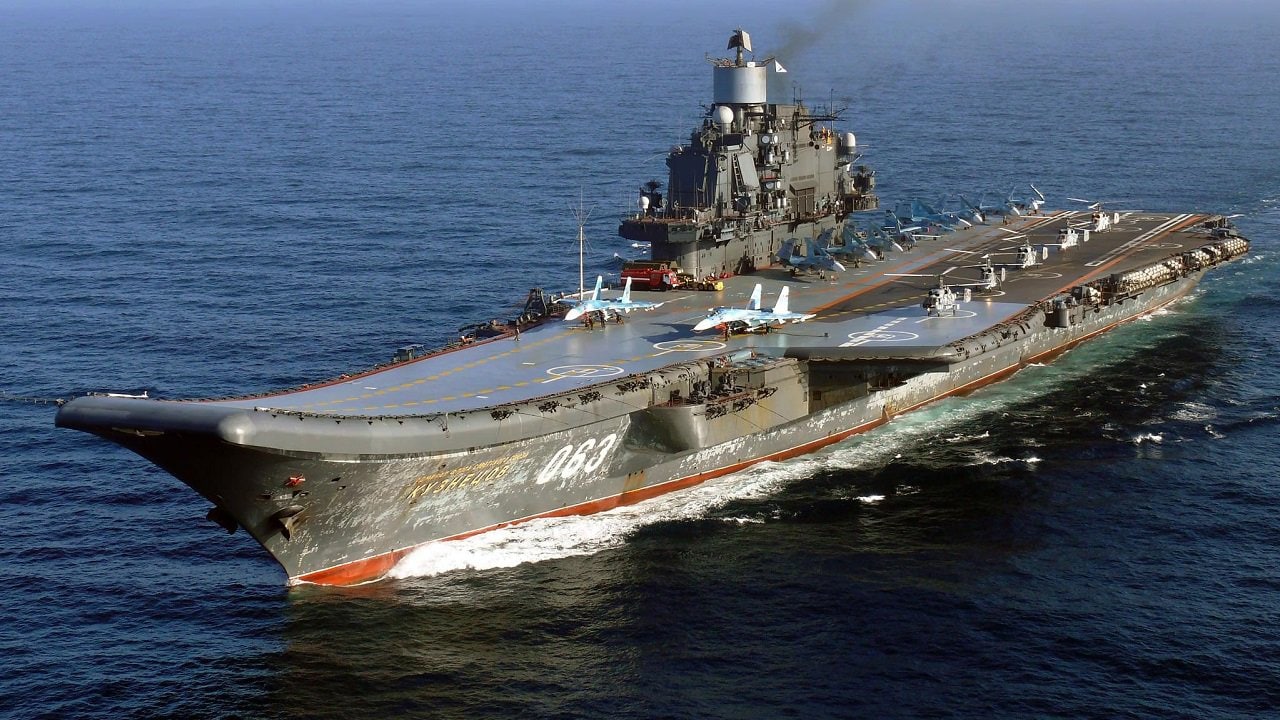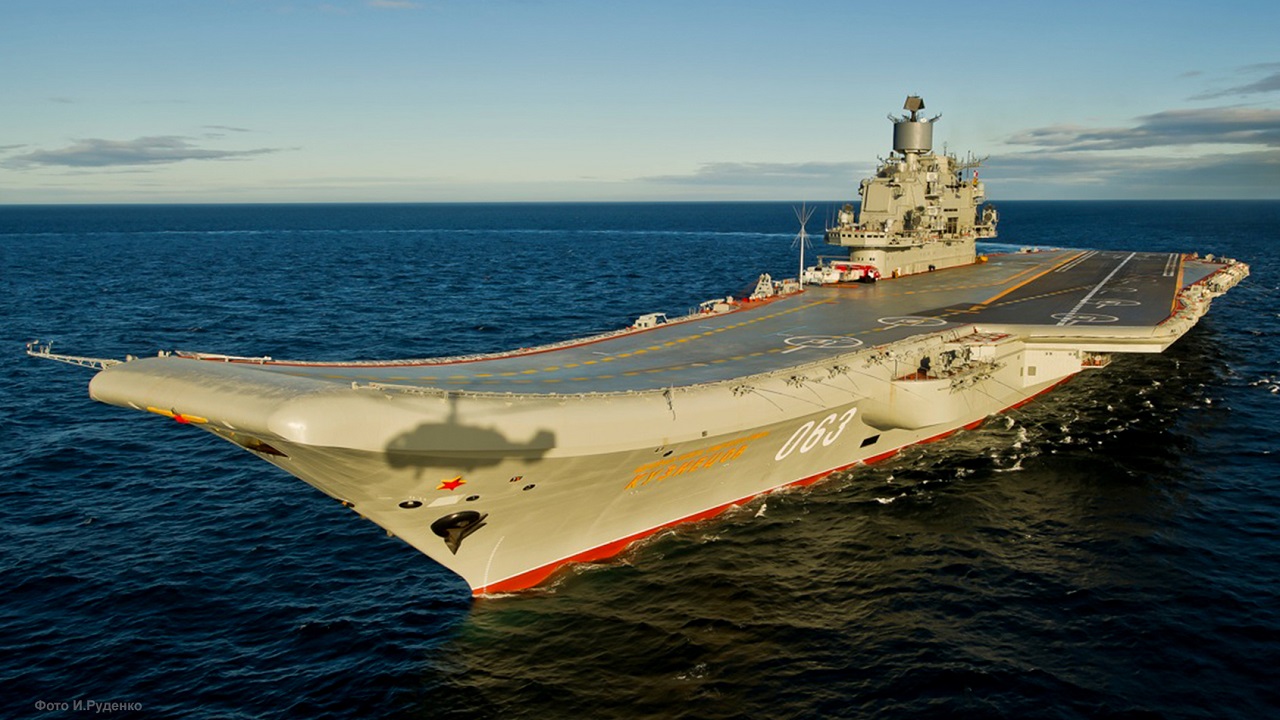However, given the closeness of the China-Russia relationship and the potential for that relationship to grow, the possibility of Russia eventually fielding a Chinese-built carrier is more likely than a group-up Russian design. Key Points and Summary: The Admiral Kuznetsov, Russia’s only aircraft carrier, has long symbolized its naval ambitions but remains plagued by mishaps […]

However, given the closeness of the China-Russia relationship and the potential for that relationship to grow, the possibility of Russia eventually fielding a Chinese-built carrier is more likely than a group-up Russian design.
Key Points and Summary: The Admiral Kuznetsov, Russia’s only aircraft carrier, has long symbolized its naval ambitions but remains plagued by mishaps and limitations. It may, in fact, never sail again, according to many experts.
With the fall of Bashar al-Assad’s regime in Syria and Russian forces seemingly on the move out of Syria, a use case for the Admiral Kuznetsov is unclear. Even in environments where the carrier has not faced a significant threat from land or sea, it has struggled to operate without accidents, seriously undermining its usefulness elsewhere.
Although Russia is one of the few countries in the world that operates an aircraft carrier, Admiral Kuznetsov is riddled with problems and is far from the capabilities of other countries’ carriers.
In 2018, a floating dry dock sank while the ship was undergoing repairs, causing a 70-ton crane to crash onto the flight deck, resulting in significant damage. About a year later, in December of 2022, a fire broke out during maintenance, killing two and injuring several others. The conventionally powered carrier has been seen transiting international waters several times surrounded by white or black smoke from its smokestack, indicating mechanical problems.
Admiral Kuznetsov: Russia’s Troubled Aircraft Carrier
The Kuznetsov has been plagued by mishaps that have seriously marred its reputation and undercut the carrier’s utility.-Designed as a “heavy aircraft-carrying cruiser,” the Kuznetsov reflects Cold War-era doctrine, blending offensive weaponry with carrier capabilities. Since its 1991 commissioning, accidents, mechanical failures, and deferred maintenance have marred its service.
Despite these limitations, the Admiral Kuznetsov has participated in several high-profile deployments. Notably, it supported Russian air operations in Syria during 2016-2017. However, the deployment highlighted the carrier’s operational deficiencies. Aircraft losses due to mechanical failures in the ship’s arresting gear underscored ongoing maintenance and technological challenges.
Unlike Western carriers, it features substantial offensive weaponry, including P-700 Granit cruise missiles, making it a hybrid between a carrier and a missile cruiser. This dual-purpose design reflects Soviet doctrine, emphasizing defense against NATO naval forces rather than global power projection.
Limited power projection and some accidents
In any case, the Admiral Kuznetsov remains a point of pride for Russia, despite its many mishaps, as one of the few countries worldwide that can operate an aircraft carrier. In the future, Admiral Kuznetsov’s role could become more symbolic than operational and emblematic of the Russian Navy’s limitations in a post-Cold War environment where the war in Ukraine is much more highly prioritized.
Russia’s Admiral Kuznetsov. Image Credit: Creative Commons.
These accidents are emblematic of Russia’s difficulties in maintaining a single, conventionally-powered aircraft carrier. The incidents are also illustrative of systemic problems the Russian Navy suffers from and the Russian military writ large.

Admiral Kuznetsov. Image Credit: Creative Commons.The future of the Admiral Kuznetsov — and carrier operations in the Russian Navy — remains uncertain. Admiral Kuznetsov is currently undergoing a prolonged modernization effort and is slated to return to service by 2025. However, questions remain about the feasibility of keeping such a problematic and aged platform operational, particularly given Russia’s financial constraints and the heavy sanctions regime imposed on Russia following its invasion of Ukraine.
Into the future for this Russian aircraft carrier? Not so fast
The Admiral Kuznetsov, Russia’s sole aircraft carrier, has long been a symbol of the country’s naval power, albeit one fraught with challenges. Commissioned in 1991 during the waning days of the Soviet Union, the Kuznetsov was designed as a “heavy aircraft-carrying cruiser.”
-Recent incidents, including a fire and dry dock collapse, highlight systemic issues within Russia’s Navy.In one startling report, Russia pulled sailors from the Admiral Kuznetsov and sent them to Ukraine.
 Caleb Larson is an American multiformat journalist based in Berlin, Germany. His work covers the intersection of conflict and society, focusing on American foreign policy and European security. He has reported from Germany, Russia, and the United States. Most recently, he covered the war in Ukraine, reporting extensively on the war’s shifting battle lines from Donbas and writing on the war’s civilian and humanitarian toll. Previously, he worked as a Defense Reporter for POLITICO Europe. You can follow his latest work on X.
Caleb Larson is an American multiformat journalist based in Berlin, Germany. His work covers the intersection of conflict and society, focusing on American foreign policy and European security. He has reported from Germany, Russia, and the United States. Most recently, he covered the war in Ukraine, reporting extensively on the war’s shifting battle lines from Donbas and writing on the war’s civilian and humanitarian toll. Previously, he worked as a Defense Reporter for POLITICO Europe. You can follow his latest work on X.
-Currently undergoing modernization, the carrier’s future is uncertain amid financial constraints, sanctions, and shifting priorities. While potential Chinese collaboration offers a distant hope, the Kuznetsov’s role increasingly appears symbolic rather than operational.
The prospect of Russia building a new aircraft carrier after the Kuznetsov is unlikely in the near term. The immense up-front cost and technological and industrial challenges make a new aircraft carrier project unlikely. Russia has floated plans for a next-generation carrier, such as the proposed Shtorm project, but these are speculative at best, with little progress beyond conceptual designs.
About the Author: Caleb Larson
The end of the Cold War drastically altered Russia’s naval priorities. The dissolution of the Soviet Union led to a sharp reduction in defense spending and a focus on coastal defense and strategic deterrence rather than blue-water operations far afield from Russian bases and friendly ports. As a result, the Kuznetsov spent much of the 1990s and 2000s in limited service, with long periods of inactivity and deferred maintenance due to budgetary constraints.














